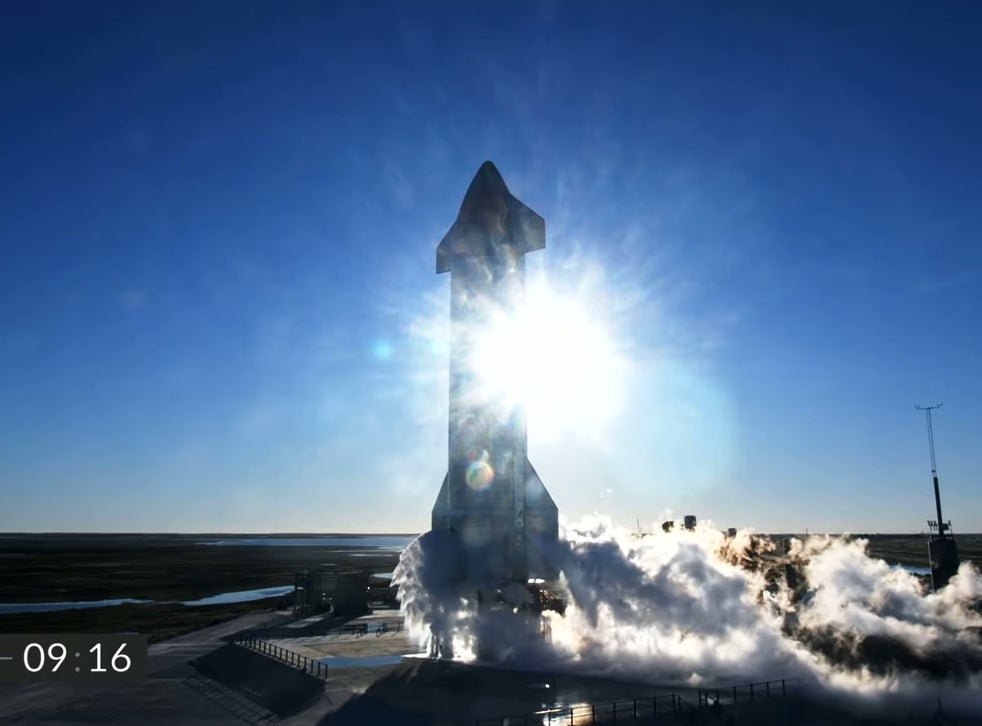SpaceX has performed the first major flight test of its Starship spacecraft, reaching a height of 12.5km before crash landing in a huge fireball explosion.
Prior to the test, SpaceX CEO Elon Musk had predicted there was only a one in three chance of the launch and landing succeeding.
Despite the failure, the test flight marks a major milestone towards sending humans to Mars. The prototype spacecraft appeared close to achieving the landing and was also able to fulfil another of other key objectives during the first ever flight test of its kind.
The Starship SN8 failed a similar attempt of the 12.5km sub-orbital flight on Tuesday with just 1.3 seconds to go until liftoff. The next Starship prototype, SN9, is already built and is expected to attempt a similar flight test from SpaceX’s Boca Chica facility in Texas.
Speaking last week at an event in Germany, Mr Musk said he hoped to send the first humans to Mars aboard a Starship craft in 2024.

Starship SN8 moments before lift-off
(SpaceX)
The serially delayed launch finally took place at 4.45pm local time (10.45pm GMT), with just 15 minutes until the day’s launch window closed.
Around two minutes after lift-off, the base of the craft appeared to catch on fire, though this soon went out.
(SpaceX)
After reaching its target altitude, Starship SN8 then attempted to perform a complicated flip landing manoeuvre, whereby it essentially belly flops to Earth.
It appeared to lose control, as it was not at the intended 60-degree angle.
However, the craft soon righted itself and almost managed to land without incident.
(SpaceX)
But as it touched down, Starship SN8 crumpled into a ball of fire.
(SpaceX)
“SN8’s flight test is an exciting next step in the development of a fully reusable transportation system capable of carrying both crew and cargo to Earth orbit, the Moon, Mars, and beyond. As we venture into new territory, we continue to appreciate all of the support and encouragement we have received,” SpaceX said in a statement prior to the test.









